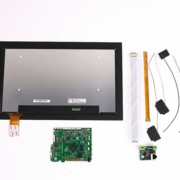Understanding the Difference Between PCBA and Motherboard
In the field of electronics and embedded systems, understanding the components that form the foundation of modern devices is essential. Two terms that often come up are PCBA (Printed Circuit Board Assembly) and motherboard. While sometimes used interchangeably in casual discussions, they refer to different concepts. This article aims to clarify the distinctions between a PCBA and a motherboard, especially from a technical perspective.
What is a PCBA?
A PCBA, or Printed Circuit Board Assembly, is a PCB (Printed Circuit Board) that has undergone assembly with electronic components mounted and soldered onto it. These components can include:
- Resistors
- Capacitors
- Integrated Circuits (ICs)
- Diodes
- Transistors
- Connectors
The purpose of a PCBA is to perform a specific electronic function. For instance, in a smart home control panel, one PCBA might handle the touch interface, while another processes network communication.
PCBAs are used across all industries—consumer electronics, industrial control systems, automotive electronics, medical devices, and more.
What is a Motherboard?
A motherboard is a specific and highly complex type of PCBA. It acts as the main circuit board in computers, embedded systems, or other smart devices. The motherboard serves as the central hub that connects all subsystems and peripherals. It typically includes:
- CPU socket
- RAM slots
- Chipsets (Northbridge/Southbridge or their modern equivalents)
- Power management circuits
- Storage interfaces (SATA, NVMe, etc.)
- PCIe slots for expansion cards
- Input/output ports
While all motherboards are technically PCBAs, not all PCBAs are motherboards. Motherboards are engineered to handle high data throughput, multi-interface communication, and system-level coordination.
Key Differences Between PCBA and Motherboard
| Aspect | PCBA | Motherboard |
|---|---|---|
| Definition | A general term for any assembled PCB | A main board that connects and controls the entire system |
| Purpose | Performs a specific function | Coordinates entire computing or control systems |
| Scope | Found in all electronic devices | Primarily in computers and embedded platforms |
| Complexity | Varies (simple to highly complex) | Always complex and multifunctional |
| Components | Depends on the design | Always includes CPU interface, RAM slots, I/O ports, etc. |
| Examples | Display driver PCBA, power supply board | Laptop motherboard, smart home hub mainboard |
Application Scenarios
- PCBA: Used in modular systems where each board performs a dedicated function—such as motor control, sensor processing, or display management.
- Motherboard: Used in systems where multiple functions must integrate through a single platform—like personal computers, industrial PLCs, or smart home hubs.
Industry Perspective
In manufacturing, distinguishing between a PCBA and a motherboard is critical during development, procurement, and testing phases. PCBAs can be custom-designed for niche products, while motherboards often follow standard form factors (e.g., ATX, Mini-ITX) and require extensive compatibility testing.
For companies like Portworld, which specialize in embedded touch panel systems and smart home control panels, understanding the role of each PCBA helps optimize system design, modularity, and cost-effectiveness.
To summarize, PCBA is a broad term encompassing any assembled circuit board used in electronic products. A motherboard is a specific, central PCBA that serves as the backbone of a computing system. Understanding their differences helps engineers, developers, and buyers make informed decisions when designing or sourcing electronics.
Whether you are designing a smart home control panel or building an industrial computing platform, recognizing the distinction between PCBA and motherboard ensures a more efficient and purpose-driven approach to hardware development.



